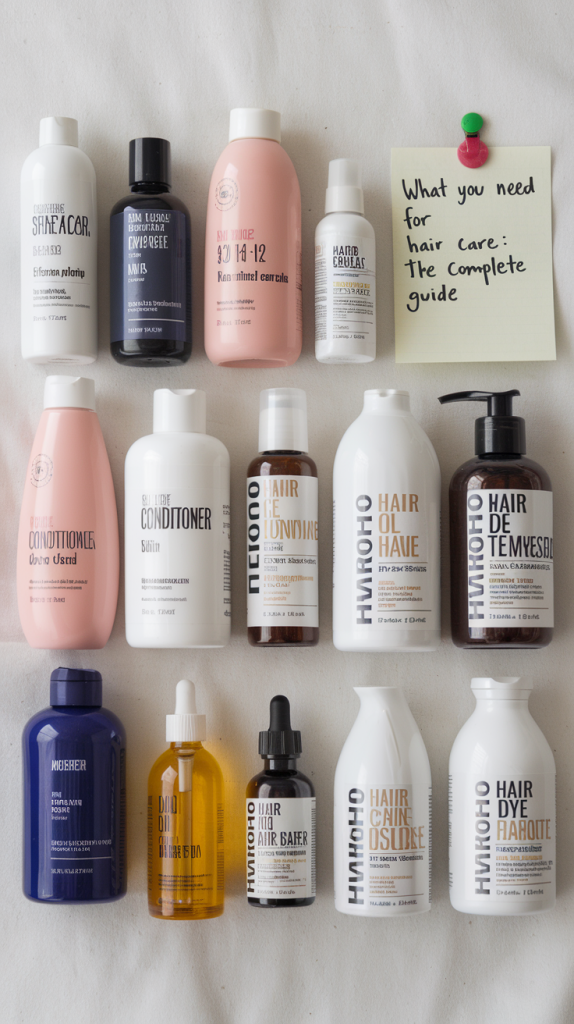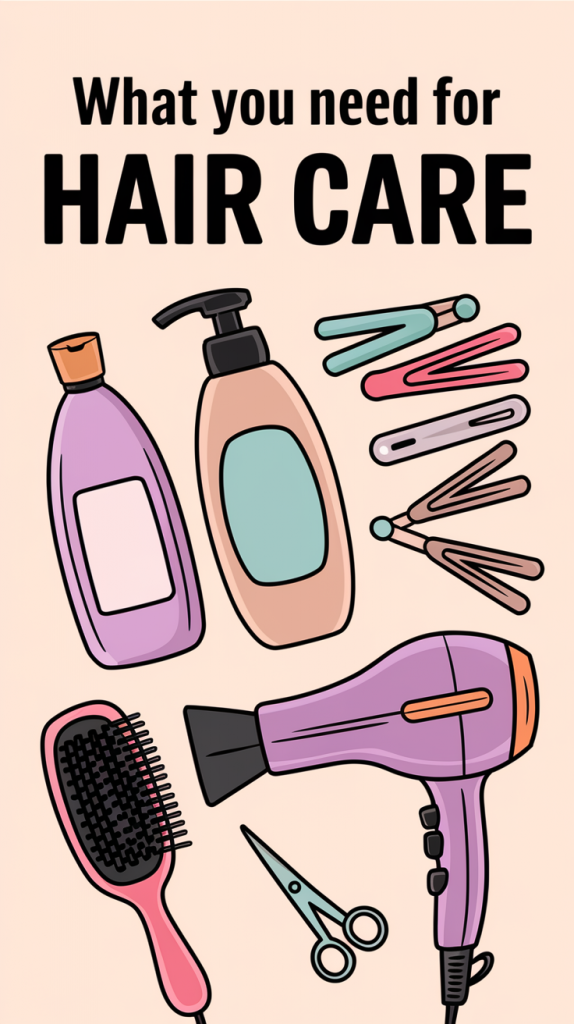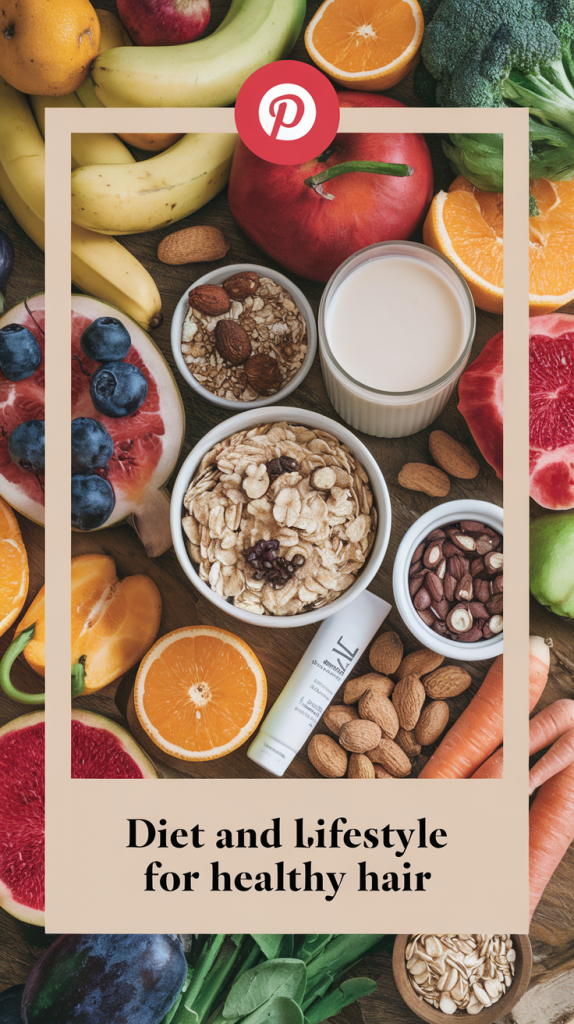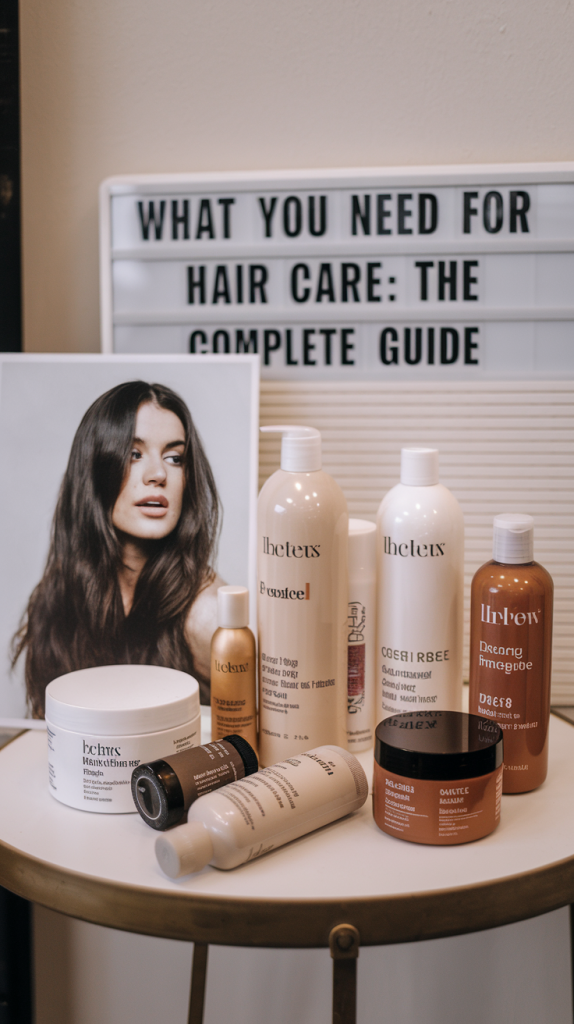What You Need for Hair Care: The Complete Guide
Taking care of your hair isn’t just about washing and conditioning; it’s about understanding your hair’s unique needs and crafting a routine that brings out the best in it. From choosing the right products to protecting your scalp, this comprehensive guide ensures you’ll have every tool at your disposal to achieve healthy, radiant hair.
Understanding Hair Types
Each hair type has specific needs, and understanding yours is the first step to building a routine that works.
| Hair Type | Characteristics | Common Challenges |
|---|---|---|
| Straight | Lacks natural curl, shiny due to even sebum distribution. | Greasiness, flatness. |
| Wavy | Gentle, tousled texture; can appear frizzy in humidity. | Frizz, lack of definition. |
| Curly | Defined curls ranging from loose to tight spirals; tends to be dry. | Dryness, tangling, shrinkage. |
| Coily | Tight curls or zigzag patterns; highly prone to dryness, breakage, and shrinkage. | Extreme dryness, breakage, shrinkage. |
Pro Tip: After washing your hair, let it air dry to observe its natural texture and determine your type.
Daily Hair Care Routine for Every Hair Type

Cleansing
Cleansing your hair removes dirt, oil, and product buildup while maintaining scalp health.
| Hair Type | Recommended Washing Frequency | Best Shampoo Type |
|---|---|---|
| Oily | Daily or every other day | Lightweight, clarifying shampoos. |
| Dry | Once or twice a week | Moisturizing, sulfate-free shampoos. |
| Normal | Every 2–3 days | Gentle cleansing shampoos. |
Key Tip: Always massage shampoo into your scalp gently to avoid irritation and improve circulation.
Conditioning and Moisturizing
Conditioning is crucial for restoring moisture and detangling hair. Apply conditioner from the mid-lengths to the ends and avoid the scalp to prevent buildup.
- Deep Conditioning: Use a hydrating mask weekly for dry and curly hair types.
- Leave-In Products: Try leave-in conditioners or natural oils (argan, jojoba) for added hydration.
Styling and Protection
- Heat Styling: Always use a heat protectant to shield your strands from damage.
- Protective Hairstyles: Opt for loose braids or buns to minimize tension and prevent breakage.
- Frizz Control: Use anti-humidity serums or creams for sleek results.
Pro Tip: Swap regular pillowcases for silk or satin ones to reduce overnight friction and hair damage.

Scalp Health: The Foundation of Great Hair
Your scalp’s health determines the strength and vitality of your hair. Here’s how to keep it in top shape:
- Exfoliate Weekly: Use a gentle scalp scrub to remove buildup.
- Massage Daily: Improve circulation and stimulate hair growth with a 5-minute scalp massage.
- Hydrate: Apply lightweight oils, like tea tree or coconut oil, to prevent dryness.
Did You Know? Regular scalp massages can boost hair growth by up to 20% over time.
Diet and Lifestyle for Healthy Hair
Hair health starts from within. What you eat and how you live impacts your strands more than you might think.
| Nutrient | Benefit for Hair | Food Sources |
|---|---|---|
| Protein | Strengthens hair structure. | Eggs, chicken, lentils, tofu. |
| Iron | Prevents thinning and hair loss. | Spinach, red meat, beans. |
| Omega-3 Fatty Acids | Adds shine and elasticity. | Salmon, walnuts, flaxseeds. |
| Vitamins A, C, D, E | Stimulates growth and hydration. | Sweet potatoes, citrus fruits, almonds. |
Quick Tip: Drink at least 8 glasses of water daily to keep your hair hydrated and resilient.

DIY Hair Care Remedies
Natural remedies can be cost-effective and highly beneficial. Try these:
- Hydrating Mask: Mix 1 avocado with 2 tablespoons of coconut oil. Apply for 30 minutes before washing out.
- Clarifying Rinse: Dilute 1 tablespoon of apple cider vinegar in 1 cup of water and use as a post-shampoo rinse.
- Shine Boost: Add a tablespoon of honey to your conditioner for an instant glow.
Common Hair Concerns and Solutions
Frizzy Hair
- Use anti-frizz serums and hydrating masks.
- Avoid overwashing, which strips natural oils.
Thinning Hair
- Incorporate biotin supplements and products with keratin.
- Consult a dermatologist for persistent issues.
Dandruff
- Use shampoos with zinc pyrithione or tea tree oil.
- Avoid over-washing and harsh products.

FAQs
1. How often should I wash my hair?
It depends on your hair type. Oily hair may need daily washing, while dry or curly hair benefits from less frequent cleansing.
2. What’s the best way to detangle hair?
Use a wide-tooth comb or detangling brush, starting from the ends and working your way up.
3. Can I repair split ends without cutting?
No, but regular trims and nourishing treatments prevent further damage.
4. Are natural oils beneficial for hair?
Yes, oils like argan and coconut provide hydration and protect against breakage.
5. How can I protect my hair while swimming?
Apply a leave-in conditioner or oil before swimming to reduce chlorine or saltwater damage.
6. What’s the best routine for color-treated hair?
Use sulfate-free shampoos, weekly hydrating masks, and UV-protectant sprays.
Conclusion
Crafting the perfect hair care routine might take some trial and error, but the results are worth it. From choosing the right products to maintaining a healthy diet, every step brings you closer to shiny, healthy hair. What’s your favorite hair care tip? Let me know—I’d love to hear how you care for your hair!
